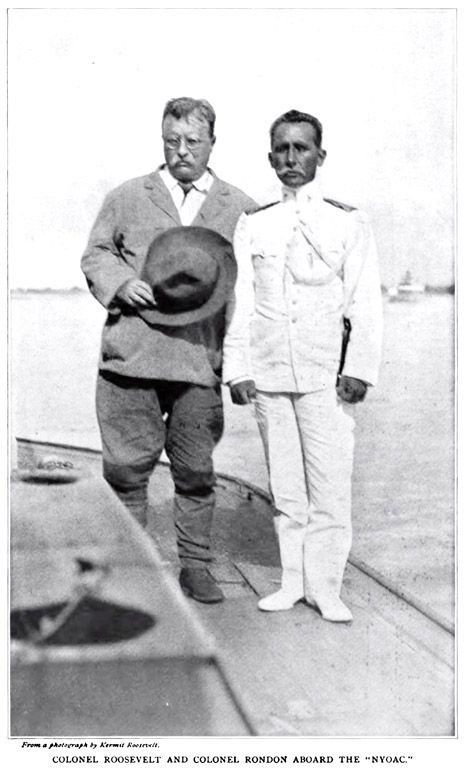 Reallogs grows, harvests & processes Merchant & Engineer Grade Eucalyptus timber used for infrastructure: utility poles, agriculture fencing, corrals, gates, mining, and heavy construction, throughout the eastern half of Brazil. A magnificent story, taught to every schoolchild in Brazil, serves as an inspiration to our endeavors.
Reallogs grows, harvests & processes Merchant & Engineer Grade Eucalyptus timber used for infrastructure: utility poles, agriculture fencing, corrals, gates, mining, and heavy construction, throughout the eastern half of Brazil. A magnificent story, taught to every schoolchild in Brazil, serves as an inspiration to our endeavors.
Candido Mariano Da Silva Rondon, a military engineer, was a Colonel in the Brazilian Army in 1907 when he was given “O Comissão de Linhas Telegráficas Estratégica de Mato Grasso ao Amazonas” -the Strategic Telegraph Commission to establish a telegraph network across...
Eucalyptus Cloeziana, sometimes called "Gympie Messmate," brought from Australia to Brazil 125 years ago, has flourished in Minas Gerais for 100 years. It is a hardy, fast-growing, drought tolerant, rotation crop tree, somewhat similar to oak, a branch of the Myrtle (Myrtaceae) family. Along with pine, grown farther in the south , it is the primary source for pulp, plywood, lumber, chips and pellets in Brazil. Eucalyptus plantation fosters biodiversity, and is a well-recognized method to prevent the land degradation that causes climate change. The lumber is the recognized standard for use as utility poles, farm gates & corral fencing, framing, and finish trim in Brazil, indeed throughout the world. National and international need has grown exponentially. These plantations also efficiently store carbon, providing for substantial, untapped business opportunity in USD 272 Billion world-wide carbon emissions trading market ("cap and trade").
According to the August 2016 Tropical Timber Market Report, published by the marketing research company ITTO, total revenue from the export of Brazilian forest products increased to USD$3.8 Billion, creating a 12% trade surplus in this product line between Brazil & US. Exports of wood products remain strong, despite economic headwinds, and in fact have increased in many areas. Both domestic and export prices remain strong, trending higher. Good signs for the industry, https://itto-d2.r-cms.jp/files/user/mis/MIS_1-31_August2016.pdf
How hard is the average mature Eucalyptus Cloezina? A 2008 Australian study (Forest & Wood Products Association of Australia, FWPA Project No. PN07-3002) finds that it is very hard indeed: 11 Kilo Newtons (kN), or 11,000 Newtons. One Newton is the force needed to accelerate one kilogram of mass at the rate of one metre per second squared in direction of the applied force. http://www.fwpa.com.au/images/resources/FWPA_PN07.3022_Part%20C_0.pdf
The Eucalyptus Cloezina grown, treated and sold by Reallogs is one of the most useful, solid and dependable hardwoods on earth.
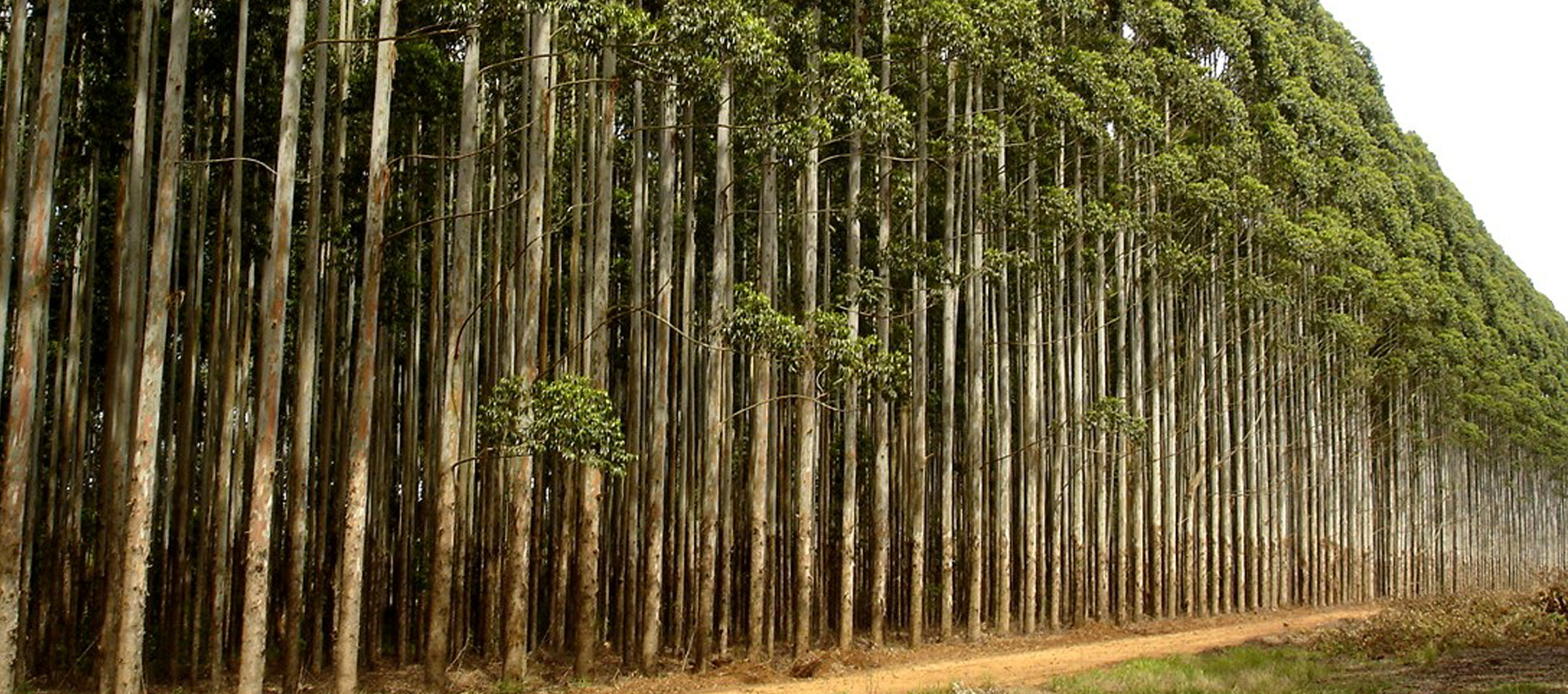 Brazilian forests cover 8.51 million km2. Decades of scientific and technological development have resulted in elevated forest productivity and high uniformity and quality woods, especially in the Eucalyptus forests of the Southeast. Eucalyptus farming is regulated and requires cultivation, harvesting and re-foresting only from certified forests. Average Brazilian production of Eucalyptus reached 40.7 m3/ha per year in 2012. In Minas Gerais, MG, where Itamarandiba is located, the average production of Eucalyptus reached 100 m3/ha per year. Of the total of planted forests in the country (7.2 million ha), 71.0% is Eucalyptus.
Brazilian forests cover 8.51 million km2. Decades of scientific and technological development have resulted in elevated forest productivity and high uniformity and quality woods, especially in the Eucalyptus forests of the Southeast. Eucalyptus farming is regulated and requires cultivation, harvesting and re-foresting only from certified forests. Average Brazilian production of Eucalyptus reached 40.7 m3/ha per year in 2012. In Minas Gerais, MG, where Itamarandiba is located, the average production of Eucalyptus reached 100 m3/ha per year. Of the total of planted forests in the country (7.2 million ha), 71.0% is Eucalyptus.
Itamarandiba, MG, the world capital of Eucalyptus production lies just at the intersection of two of the most ecologically diverse continental biomes in a country with the most biodiversity on...
 Eucalyptus, not native to Brazil, was imported from Australia in the early 20th century and it loves the earth of Minas Gerais. Strong as Oak, versatile as Pine, it grows to amazing heights within a short time, producing flowers pollinated by bees who make very good honey, bark and leaves for medicine, sturdy wood used for residential, agricultural and commercial construction and infrastructure, and recycled biomass waste for heat and power.
Eucalyptus, not native to Brazil, was imported from Australia in the early 20th century and it loves the earth of Minas Gerais. Strong as Oak, versatile as Pine, it grows to amazing heights within a short time, producing flowers pollinated by bees who make very good honey, bark and leaves for medicine, sturdy wood used for residential, agricultural and commercial construction and infrastructure, and recycled biomass waste for heat and power.
The tree farmers and processors of Itamarandiba, the Eucalyptus capital of Brazil, are the good stewards of the forests, and RealLogs leads...
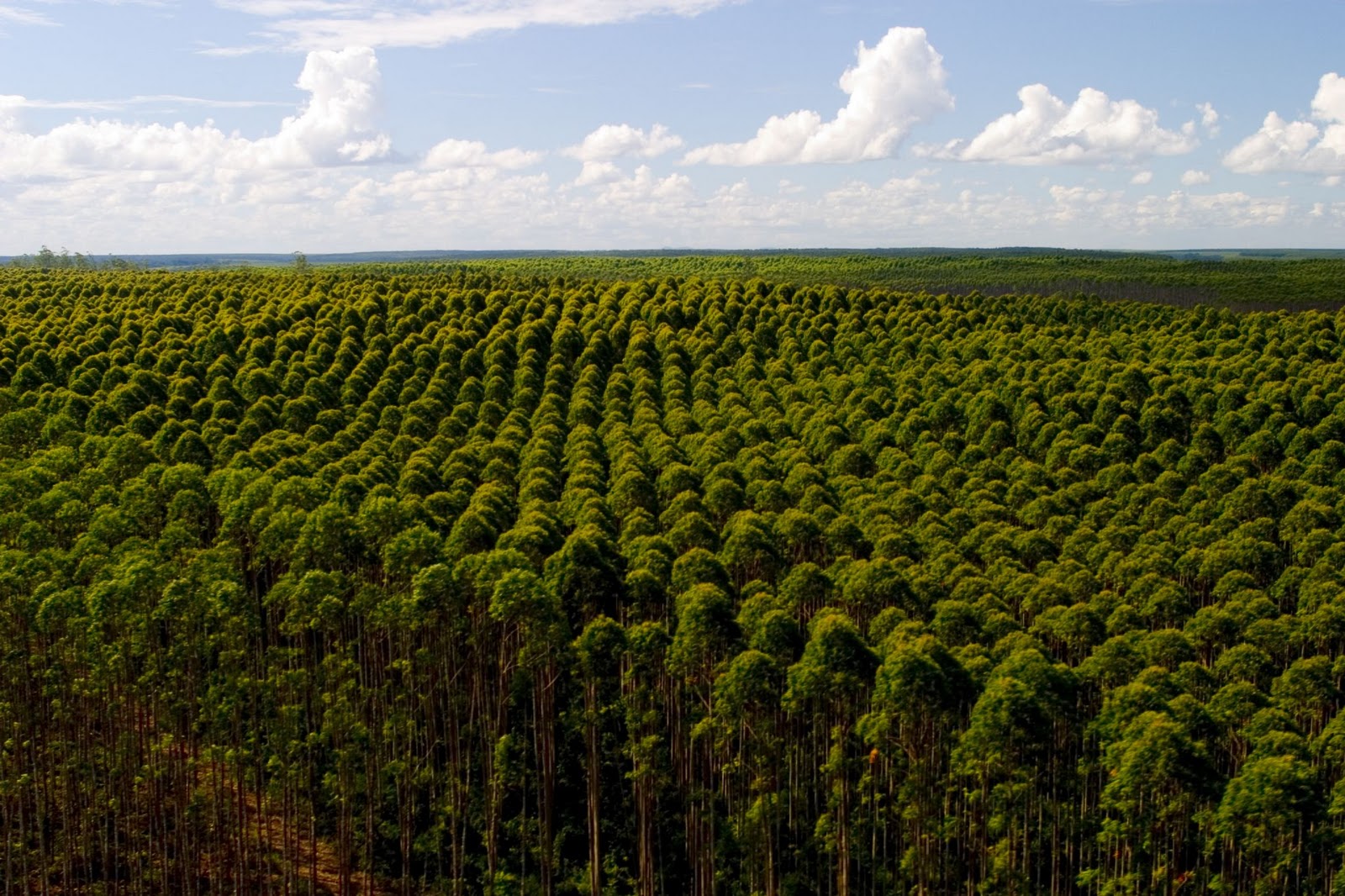 Word about the eucalyptus began to appear around the 60s and 70s of the last century when the reforestation did not show the expected results on the productivity.
Word about the eucalyptus began to appear around the 60s and 70s of the last century when the reforestation did not show the expected results on the productivity.
The claim that the eucalyptus weakens the soil is false, because almost everything it removes is returned. After harvesting; bark, leaves and branches, which have 70 percent tree nutrients, remain in place and are incorporated into the soil as organic matter to contribute to erosion control.
It is common to hear that eucalyptus generates a green desert; this statement is also false. Having to leave part of the property to the legal reserve and permanent protection area, eucalyptus and underbrush form a corridor for conservation areas and create a habitat for wildlife, providing shelter conditions, food and even reproduction as shown by studies done by Klabin and Aracruz.
It's true that they are not a habitat for as many animals like other trees, but there is proof that they are a wonderful habitat: these animals were recorded in forests in Ramires Reflorestamentos Company in Mato Grosso do Sul.
Another false claim is that the eucalyptus does not generate social and economic benefits in the city. When handled properly, however, it generates as much benefits as other rural enterprises, starting with the large number of direct and indirect jobs that it generates both in nurseries, and in the planting and maintenance of forests. Furthermore, it generates tax collection, investment in infrastructure, local production of consumer goods, promoting the various types of new businesses and initiatives in the social area like building houses, clinics and schools.
 It is an expression that was created when our country was still a part of Portugal. "In the beginning of the Portuguese exploration, this term was made to describe the woods
that could be cut down only if the Portuguese authorities allowed – so cutting depended on permission," says
biologist John Batista Baitello, the Forestry Institute of Sao Paulo. At the time, the first tree to be described
as hardwood was the Brazil wood in an attempt to prevent the wood to be smuggled by Spanish, French and English
boats that were docked off the coast. Later, hardwoods such as Jatoba and Mahogany were also included in this
category. "After independence, the rules of the Portuguese were no longer valid, but the term continued to be
used every day. Today, hardwood is referred to as durable and of high commercial value," says John Batista.
With this broader definition, species such as mahogany, cedar and rosewood have joined this noble team. One
of the secrets to the durability of these trees is that they produce chemicals in their core, which protect the
trunk from fungi and insect attack. Thanks to this protection, a noble species can survive hundreds of years
and be used for various purposes, from houses, to the development of musical instruments, to the manufacturing of
extremely durable furniture. However, the extensive deforestation has caused much of the hardwoods to practically
be extinct from the country's forest. Its use was also restricted - the furniture sold today as "standard mahogany",
for example, is actually made with a smaller amount of resistant woods, only covered by a thin layer of pure wood.
Currently, the process is controlled: the law of environmental crimes, cutting hardwood without government authorization
lead to up to two years in jail. The hard part is to enforce these rules. Unsurprisingly the hardwoods continue to
disappear because of illegal logging.
It is an expression that was created when our country was still a part of Portugal. "In the beginning of the Portuguese exploration, this term was made to describe the woods
that could be cut down only if the Portuguese authorities allowed – so cutting depended on permission," says
biologist John Batista Baitello, the Forestry Institute of Sao Paulo. At the time, the first tree to be described
as hardwood was the Brazil wood in an attempt to prevent the wood to be smuggled by Spanish, French and English
boats that were docked off the coast. Later, hardwoods such as Jatoba and Mahogany were also included in this
category. "After independence, the rules of the Portuguese were no longer valid, but the term continued to be
used every day. Today, hardwood is referred to as durable and of high commercial value," says John Batista.
With this broader definition, species such as mahogany, cedar and rosewood have joined this noble team. One
of the secrets to the durability of these trees is that they produce chemicals in their core, which protect the
trunk from fungi and insect attack. Thanks to this protection, a noble species can survive hundreds of years
and be used for various purposes, from houses, to the development of musical instruments, to the manufacturing of
extremely durable furniture. However, the extensive deforestation has caused much of the hardwoods to practically
be extinct from the country's forest. Its use was also restricted - the furniture sold today as "standard mahogany",
for example, is actually made with a smaller amount of resistant woods, only covered by a thin layer of pure wood.
Currently, the process is controlled: the law of environmental crimes, cutting hardwood without government authorization
lead to up to two years in jail. The hard part is to enforce these rules. Unsurprisingly the hardwoods continue to
disappear because of illegal logging.
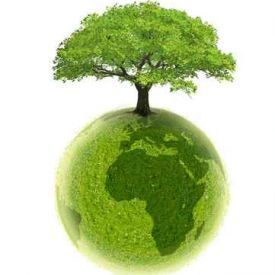 This word has never been used so much like today: Sustainability. But, after all, what is sustainability?
This word has never been used so much like today: Sustainability. But, after all, what is sustainability?
According to Wikipedia: "Sustainability is a systemic concept; related to the continuity of economic, social, cultural and environmental aspects of human society."
But you can still think, "What all this may mean in practice?"
We can say " in practice ", that this concept of sustainability is to support farming areas or the use of earthly resources (natural or otherwise) in order to cause the least amount of damage, and to maintain the balance between the environment and human communities and the entire biosphere. It may seem like a difficult plan to be achieved and, in many cases economically unviable. However, it is not so. Even human affairs have a high impact on the environment such as mining; plant removal, large-scale agriculture; the manufacture of pulp and paper and all others; the achievement of sustainable practices in these enterprises; proved to be economically possible and in many of them brought an extra financial strength.
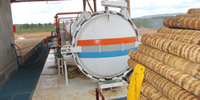 Sustainability is occupying more and more space in the media and attracted the attention of various areas,
especially construction. The stamp "sustainable" has become an object of desire for industries producing
materials and the companies that build buildings in...
Sustainability is occupying more and more space in the media and attracted the attention of various areas,
especially construction. The stamp "sustainable" has become an object of desire for industries producing
materials and the companies that build buildings in...

The treated Eucalyptus is the only building material that is 100% renewable at the same time. It helps ease the pressure on native forests - for reforestation species - and is able to efficiently store carbon, a responsible factor for the greenhouse effect, from the atmosphere.
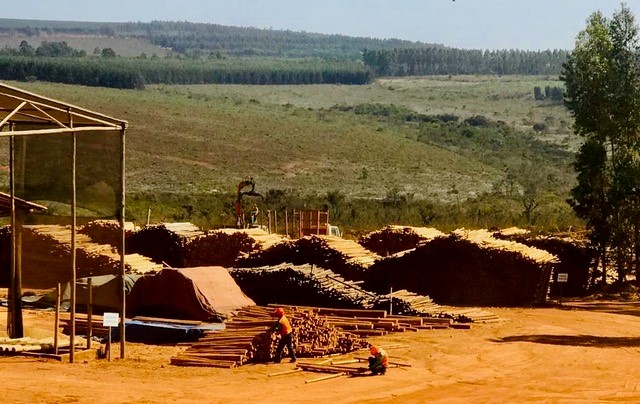
Since its conception, seven years ago, since the opening of its factory, five years ago, Reallogs

REALLOGS
3422 Old Capitol Trail
Suite 700
Wilmington, DE
19808
Tel
+1-203-209-8829
Email: johntartaglia@reallogs.com